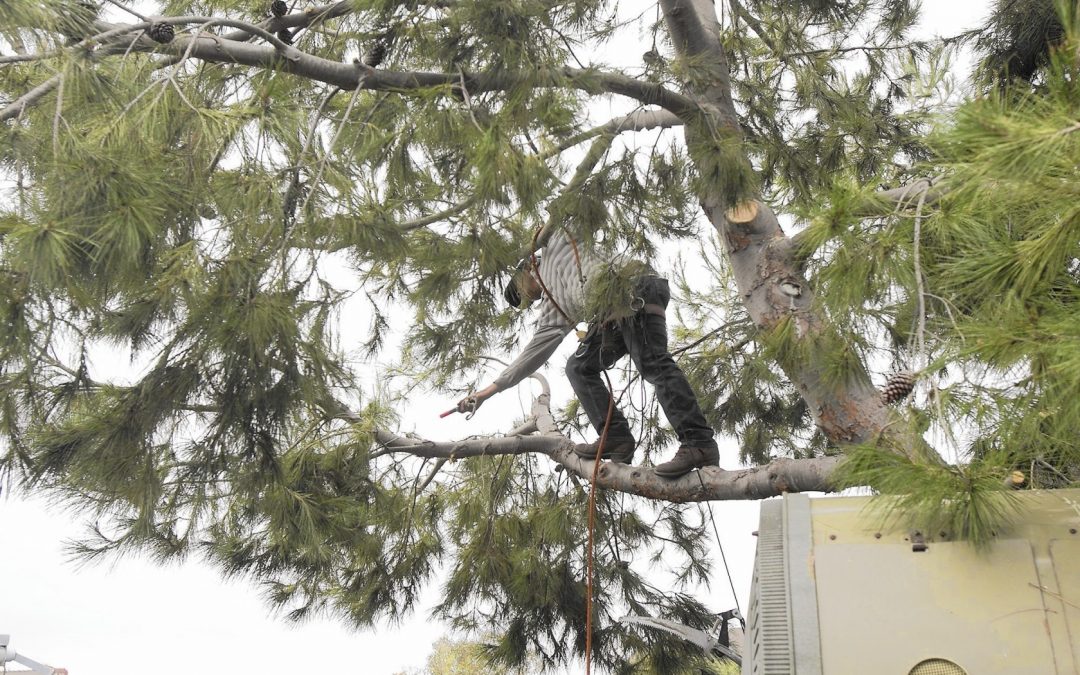Written by HGTV Admin and published on https://www.hgtv.com/.
When it comes to tree maintenance, you may think that tree trimming is one of these tasks that can easily be done without the help of a professional. While it may be true that you can conquer tree trimming on your own, there are several important things to consider before beginning. Often homeowners are unaware that there is, in fact, a proper way to trim trees, resulting in some common tree trimming mistakes. Without training or extensive tree knowledge, it is important to do some research on how to properly trim your trees during your planning phase to help avoid these mistakes.

Biggest Pruning Mistakes
The myth of the “maintenance free” landscape is easily debunked when DIY landscapers realize that plants never stop growing. Pruning, if only of the rare, occasional variety, is essential for every functioning landscape. While incidents of permanent pruning damage seldom occur, there are right and wrong ways to go about the business of pruning.
Not Pruning
One major pruning mistake that flies under the radar for a long time is a failure to prune. Not pruning at all can cause its own set of problems. Look for plants that have outgrown their allotted space or become “leggy.” Some blooming plants will harbor old flower heads or seedpods that may be undesirable. Neglected plants can be reshaped, but often they will require rather extended time, and in some instances, several follow-up prunings, to grow back into a desirable shape again.
Cutting Off the Flowers
Ever wonder why your hydrangea doesn’t bloom? It could be that you pruned the buds off. This is an example of another big pruning mistake: pruning at the wrong time of year. Most spring and early summer bloomers set their flower buds on the previous year’s growth. If they are pruned too late in the summer or before bloom time in the spring, it is likely that they will not bloom well, or at all. Limit pruning of these early bloomers to a window of time within a month of the end of their bloom cycle.
Excessive Shearing
Hedges, foundation plants and topiaries are normally sheared to maintain a tightly groomed appearance. Problems can arise, however, when shearing is the only approach used to attend these plants. A thin layer of dense leaves with little thickness will leave them looking like hollow green shells. The best way to both prevent and correct this pruning mistake is with occasional thinning. Use handheld pruners or loppers to remove up to ten percent of the branches bearing the surface foliage in order to allow sunlight to penetrate deeply into the plant. Thinning will promote deep branching and greater sunlight penetration will stimulate lush, deep foliage.
Out of Shape Plants
When hedges are cut inward toward the bottom, it becomes increasingly more difficult for them to regenerate foliage at the base. Ultimately the bottom of the plant will be bare. For the consistently best look and long-term health, hedges and other groomed plants must be wider at the bottom and taper slightly toward the top. This shape will provide good sunlight exposure for the whole foliage surface, leading to good leaf production throughout.
Topping
Tree and shrub varieties should be researched before planting to ensure that they will grow to an appropriate size for their allotted space. Removing the top of a tree stimulates one or more secondary leaders that will naturally grow in the same way as the original but with weaker structure, resulting in a net negative effect. A tree that has outgrown its space should be removed. A large, well-established shrub may be “renewal” pruned in late winter or early spring. Simply cut the shrub to the ground (or within a foot or so of the ground), allowing it to regenerate from the suckers that will form in spring. Ultimately, it is best to replace too-large landscape plants with right-sized ones.
Poor Technique
Simply cutting branches off of trees and shrubs will not necessarily give the desired effect. Doing it the wrong way may result in unsightly cut ends showing for a long time, heavy production of water sprouts producing an unbalanced look, oversized scars, etc. When removing branches, always make the final cut at the top of a branch collar (the swollen area where the branch meets the main stem) or at a node (where leaves or lateral branches generate from the branch you are cutting). Conifers take a long time to regenerate new growth when cut beyond the growing tips. Hard cutbacks should be avoided if possible, but when necessary these cuts should be made where the cut will be carefully hidden within surrounding foliage. Large, heavy branches should be slightly undercut before removing to prevent the bark from tearing when the wood breaks midway through cutting.
Junky Tools
Dull blades, stiff, loose or rusty moving parts can lead to all sorts of problems from ugly, ragged cut edges to spread of disease, and possibly to injury of the user. Keep pruning tools sharp, clean, well oiled and in overall good working order. Properly repair or replace them if they become damaged. Store them in a dry location.
Attention to Detail
The difference between a well-pruned landscape and one riddled with big pruning mistakes is often a matter of detail. The effort and expense involved is comparable in the short term, and far less in the long run when good pruning practices are employed over questionable ones. Always work patiently and methodically. When in doubt, take a little time to research the specific plant or issue in question before proceeding. Remember, after it’s cut, you can’t put it back. With forethought and practice, pruning mistakes will become a thing of the past.
Original post here https://www.hgtv.com/outdoors/gardens/planting-and-maintenance/biggest-pruning-mistakes.


